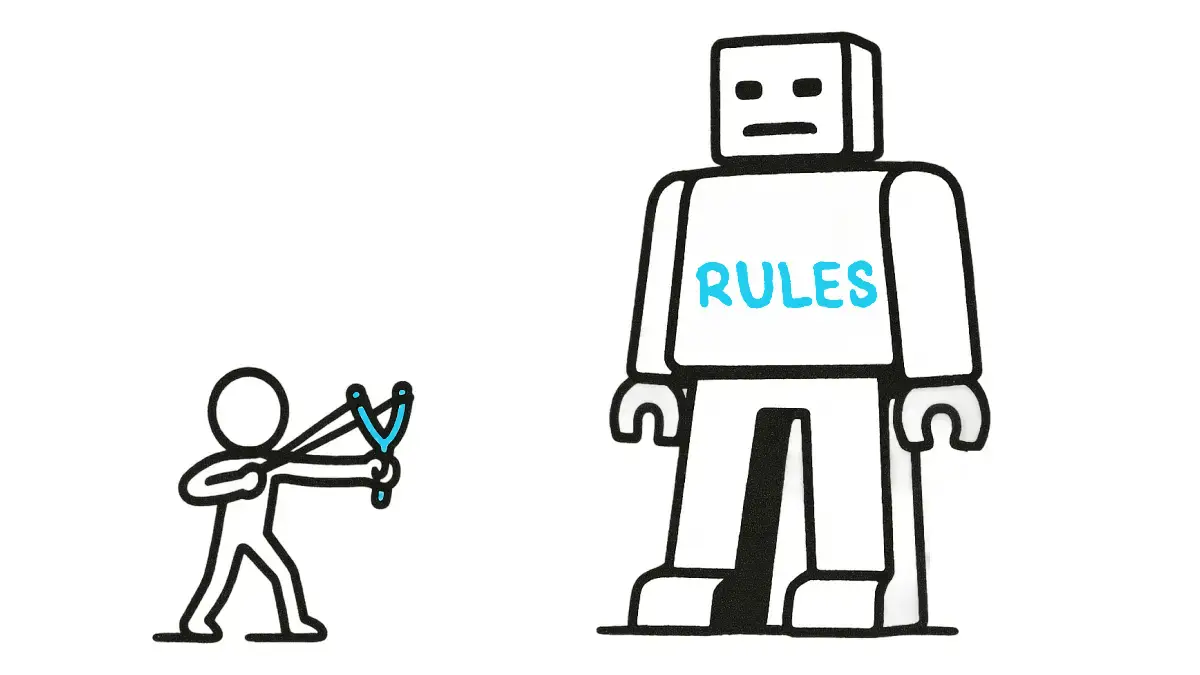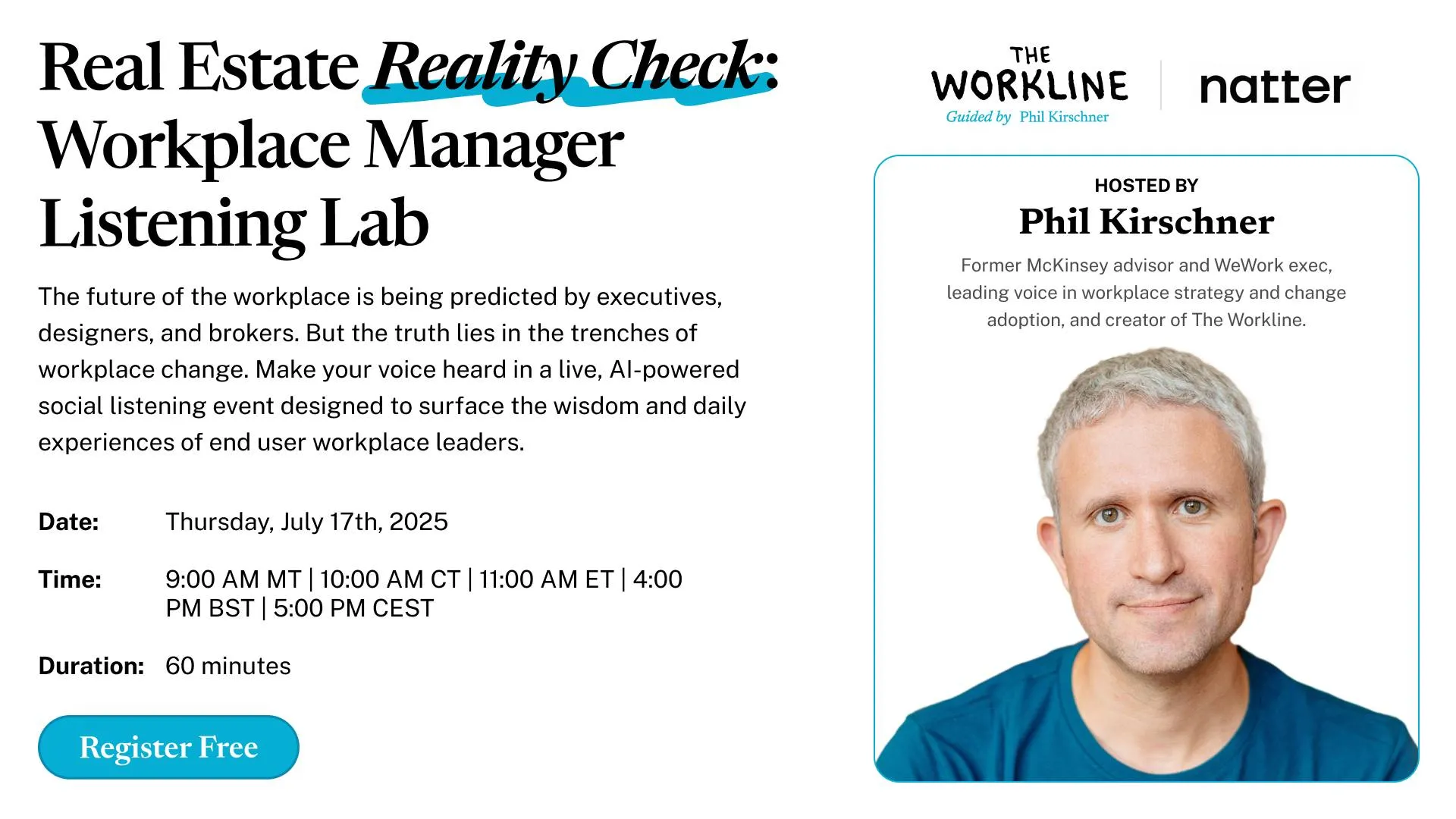Why Smart Companies Attack Themselves

Most workplace leaders know their function could be faster, more user-friendly, more innovative. But legacy systems and risk aversion hold them back while competitors leap ahead with clean-slate approaches.
What if you could break free from those constraints? What if you got permission to start fresh and compete with yourself?
There's a banking concept you should steal: the "attacker mindset."
Instead of trying to innovate within existing constraints, forward-thinking companies create entirely new business units designed to challenge their own legacy operations.
Not a single workplace leader I've mentioned this to recently knew what an "attacker" unit was. Once I explain it, something clicks.
Because deep down, most of us want to be allowed to break the rules. We want permission to start from scratch. We want to build something better—not just incrementally, but fundamentally.
Lead Across the Lines of Modern Work with Phil Kirschner
Over 22,000 professionals follow my insights on LinkedIn.
Join them and get my best advice straight to your inbox.
Why Companies Attack Themselves
Educator Eddie Obeng nailed the innovation paradox in his TED talk:
All CEOs want innovation, so they seek innovation and they say to their people ‘take risks and be creative!’ but, unfortunately, the words get transformed as they travel through the air, entering their ears, and what they hear is ‘do crazy things and then I'll fire you.'

This mirrors what I wrote about in 'Define the Change or Watch it Fail'—when leaders aren’t clear, employees default to the status quo.
Instead of asking people to innovate within the constraints of its culture and infrastructure—or serendipitously via water cooler conversations—the attacker approach creates a fundamentally new business unit designed (and funded) to challenge the parent's own legacy systems, operating models, and customer experience.
The results speak for themselves:
- Marcus (Goldman Sachs) acquired 5M customers in four years.
- Visible (Verizon) cut customer acquisition costs.
- Polestar (Volvo) earned higher customer satisfaction.
These brands were faster and leaner than their parents while avoiding startup risks, i.e., enjoying the benefits of not starting from scratch.
Connecting the Dots
I’ve explored this dynamic before, just not by name.
Accenture’s drone experiment created conditions to try something crazy…even if they literally do not take off right away.
In permeable coworking, I explained how workplace mobility accelerates serendipity and allows new ideas to infiltrate your teams.
At a real estate conference, I asked: If your corporate real estate function were a startup, would it survive? You can swap in HR or IT. The answer gets uncomfortably revealing.
That's all attacker thinking, and worth exploring across the domains shaping work today.
🚨 Hey, real estate and workplace end users! 🚨
I am hosting a first-of-its-kind, AI-powered social listening event with Natter next Thursday, July 17th, to amplify your wisdom and lived reality from delivering workplaces experiences. This is not a webinar. There will be no replay. You will rotate through live, 1:1 peer conversations.
Click here or below to read the FAQ and register to participate.

Preparing for Your Attack
Let's play this out in three hypothetical cases across real estate, human resources, and technology. Imagine your CEO invited you to do it.
You have permission to build a shadow version of your own function—one that starts fresh, aims to win hearts and minds, and maybe teaches the legacy organization a few things along the way.
Competitive Coworking
What if you rented space in a flexible / serviced workplace near your HQ and tried to lure employees across the street?
No mandates, just straight community appeal. You could offer more diverse work settings, provide better (free!) coffee, and run “surprise and delight” events that match your members’ preferences. You would design as if people were paying for hospitality, not hot desks.

Your real estate team would be measured on choices, not compliance—event attendance, space upgrades, referrals.
At Credit Suisse, I represented our attacker Smart Working program, gaining momentum by inspiring voluntary adoption.
At WeWork, I saw a bank's marketing team try to move to a WeWork because their creatives weren't feeling the cubicle vibes. The effort was ultimately squashed, but it showed an unmet need for a better product.
Ask yourself: What would happen if I let people vibe office somewhere new (tearing up design guidelines) and had to earn attendance?
Rival Recruiting
What if you launched a new talent attraction and onboarding team—just for a small slice of roles—and let it run its own playbook?
Skip the ATS. Use video intros instead of résumé screens. Offer on-demand recruiter chats. Record async onboarding content that feels personal, paired with higher-touch gatherings.
You could call it a pilot. You could limit the scope. At least you're getting a signal on what people actually like about finding a new role.
Your attacker HR function would compete on candidate experience. Every touchpoint would be designed to make people want to join—or even refer friends after being rejected—not just assess whether they're qualified.
Ask yourself: How could a completely new approach change the impression we make on candidates? Would our new hires onboard faster, better, or with more joy?
Trailblazing Technology
What if you gave a select team access to more experimental tools, with lighter compliance guardrails and a real budget to test?
A real attacker tech stack with one rule: deliver better results safely.
Let them use Notion if the rest of the organization is on SharePoint. Let them use DIY automation tools like Zapier, Make, or n8n. Document what works, and see who comes knocking at the door asking to join.
Shadow IT already exists. Why not bless it, shape it, and learn from it?
Your attacker IT function would compete on user experience and results. Every tool would be chosen because it genuinely helps people work better, not because it fits into an enterprise architecture diagram.
Ask yourself: What tools are people trying to use anyway but can't? Could employees find a better way to work if you let them?
🎙️ Phil's Content and Connections 🎥
The WorkSpaces team just posted an interview with me as a preview of the keynote I will be making at their event on October 5-7 in Napa.

The Reality Check
Here's what makes the attacker mindset so powerful—and so threatening: it exposes the gap between what we say we want and what we deliver.
Every CRE function claims to enable productivity and collaboration. Every HR leader says they want to create a fantastic employee experience. Every IT team talks about user-centric design.
But if you had to compete for your employees' attention, engagement, and loyalty. If they had genuine alternatives, would you win?
Alternatives already exist—competitors offer better workplaces, startups provide flexibility, and employees find workarounds.
Your 90-Day Attack Plan
Stop waiting for permission to innovate. Start competing with yourself:
- Week 0: Forward this email to get your colleagues' attention.
- Week 1-2: Pick one function and design your attacker version. What constraints would you drop? How would you win?
- Week 3-4: Define success metrics. Think adoption rates, satisfaction scores, and referrals—data that proves people choose your solution.
- Month 2: Launch a small pilot with volunteer participants. Give genuine alternatives, track their choices. Measure what's working.
- Month 3: Scale what succeeds, kill what doesn't, and prepare to challenge your legacy operations with proof of concept.
The organizations thriving in the coming years will be the ones brave enough to compete with themselves before someone else does.
Your employees are already making choices about where to work, how to work, and which tools to use. The only question is whether you're making it easy for them to choose you.
- Phil

Lead Across the Lines of Modern Work with Phil Kirschner
Over 22,000 professionals follow my insights on LinkedIn.
Join them and get my best advice straight to your inbox.


